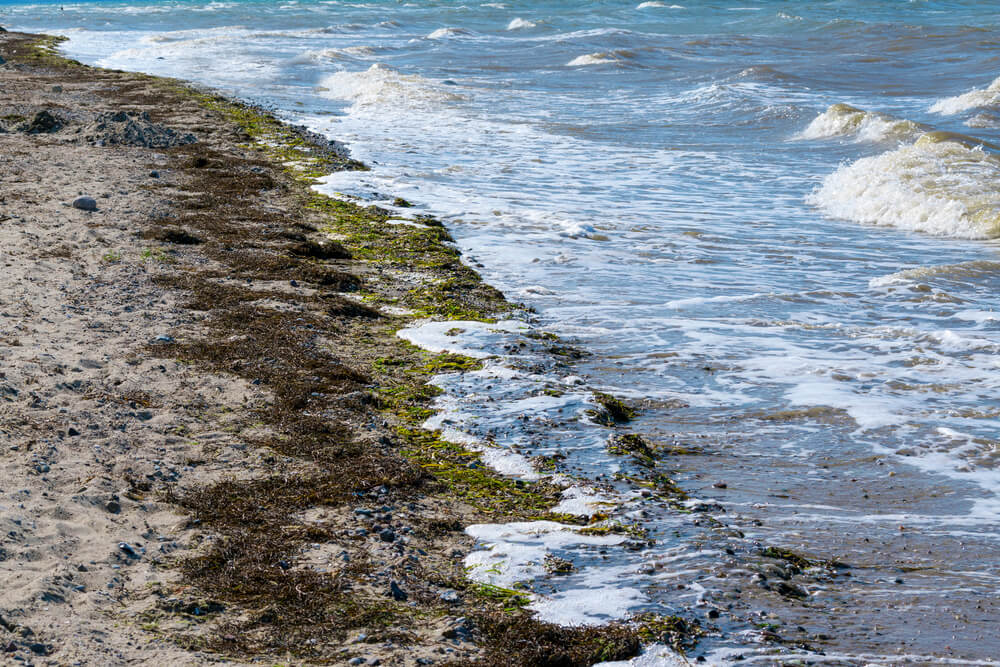Worse than ever: Florida beaches are swamped with algae
The annual algae bloom in Florida this year, it seems, will not be limited to the summer months and worsen by autumn. In June, the bloom was three times the record recorded in 2015, according to satellite imagery from the University of South Florida. This year's algae invasion could be the worst in history.

Фото: Depositphotos
There is no talk of an annual record yet: experts promise that the situation will worsen and the peak bloom of Sargassum algae and blue-green algae will occur at the end of summer - beginning of autumn, writes TC Palm.
Brian Lauinte, a professor at the Atlantic Ocean Institute in Fort Pierce who has been studying seagrass since the 1980s, says we're seeing "a lot of global change." What is happening is making seaweed that is usually beneficial for the ecosystem not so good.
In small quantities, algae prevent the erosion of the coastline, capturing the sand brought by the wind, provide food on the shore and in the water, the necessary environment for many forms of life. But on a huge scale, the same algae fill up the nests of sea turtles on the beach, kill turtles, fish, and sea grass in the water, depleting oxygen when decomposed.
To the great disorder of swimmers, seaweed attracts insects, exudes gaseous hydrogen sulfide, which smells of rotten eggs, creates habitat for jellyfish and other small biting and stinging creatures.
Local beaches
While visitors to the beaches of Florida are annoyed by all of the above, the real attack of aggressive, dense and environmentally destructive algae falls on the Caribbean. The strip of dried seaweed on the coast reaches 20-30 meters, say experts working in the coastal strip.
On Sunday, a 2-3 meter wide ribbon of algae “decorated” the beach at Pepper Park on North Hutchinson Island in Fort Pierce. Seaweed has also wreaked havoc on Little Cayman. Cleaning seaweed from beaches is expensive and also threatens the lives of sea turtles, so most authorities wait until the tide clears away the dried algae.
Another form of algae
Algae is a form of blue-green algae, and scientifically, what's happening on the beaches is similar to what's happening on Lake Okeechobee and Florida's inland lakes, but on a much larger scale. Toxic blue-green algae blooms in Lake Okeechobee are fueled by nitrogen and phosphorus from agricultural fertilizers and city waste. Likewise, seaweed blooms—unique to the Atlantic—are largely originating from the west coast of Africa and are fueled by phosphorus contained in windblown sand particles from the Sahara.
Circulating currents of the Atlantic pushes algae to the east. The Gulf Stream transports it to the north, not allowing part of the algae to reach the shores of Florida, unless strong eastern winds exceed the Gulf Stream. Strong winds can even direct the flow of vegetation to the Gulf of Mexico and Panhandle.
Researchers attempted to find nutritional, medicinal, or other beneficial properties in algae, but the federal government disrupted an attempt by companies from North Carolina to harvest algae for use as a fertilizer. The South Atlantic Fisheries Management Council has banned the collection of algae from US marine waters because it provides habitat for fish.
Sargassum
Previously, oceanographers called Sargassum seaweed "Gulfweed" because they thought it originated in the Gulf of Mexico, where it fed on substances from Mississippi River discharges. The current carries seaweed from the Gulf to Florida, then to the Gulf Stream, and then east to Europe, from where the flow flows to southern Africa and east to the equator. Much of this algae remains on the bottom of the Sargasso Sea, an area of calm winds and deep blue water named by Portuguese explorers in the early 15th century.
Read also on ForumDaily:
Toxic algae massively poison ponds in Florida
Florida residents are asked not to go to the beaches because of toxic algae
Residents of New Jersey after fishing on the lake alive eat bacteria
After a vacation in Florida, a woman died from carnivorous bacteria
Subscribe to ForumDaily on Google NewsDo you want more important and interesting news about life in the USA and immigration to America? — support us donate! Also subscribe to our page Facebook. Select the “Priority in display” option and read us first. Also, don't forget to subscribe to our РєР ° РЅР ° Р »РІ Telegram and Instagram- there is a lot of interesting things there. And join thousands of readers ForumDaily New York — there you will find a lot of interesting and positive information about life in the metropolis.











